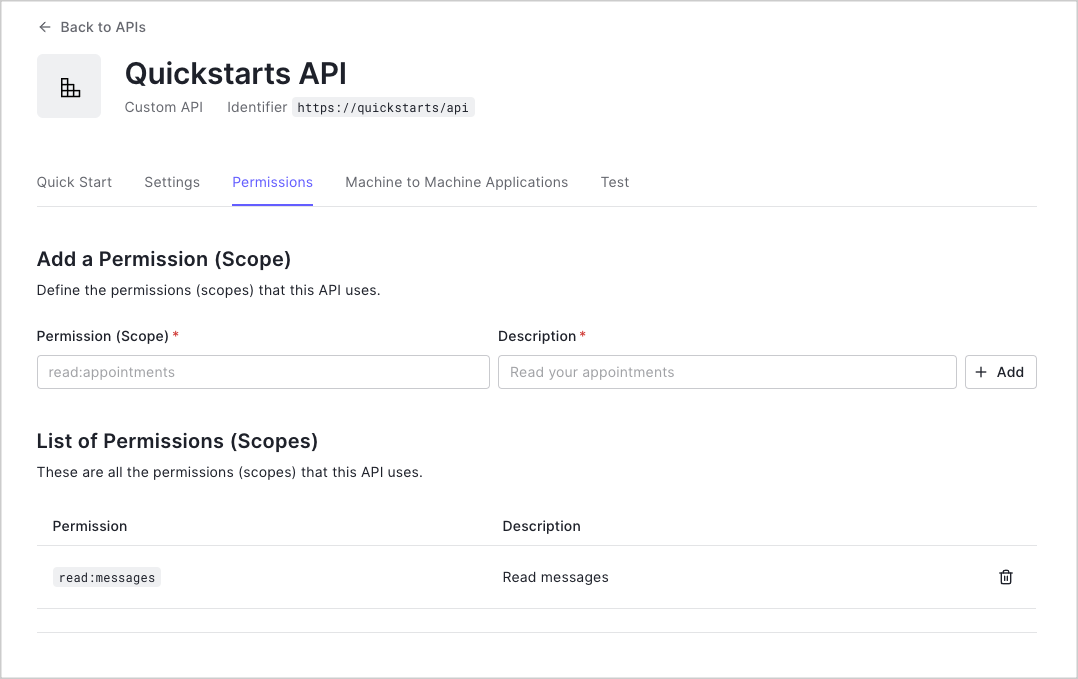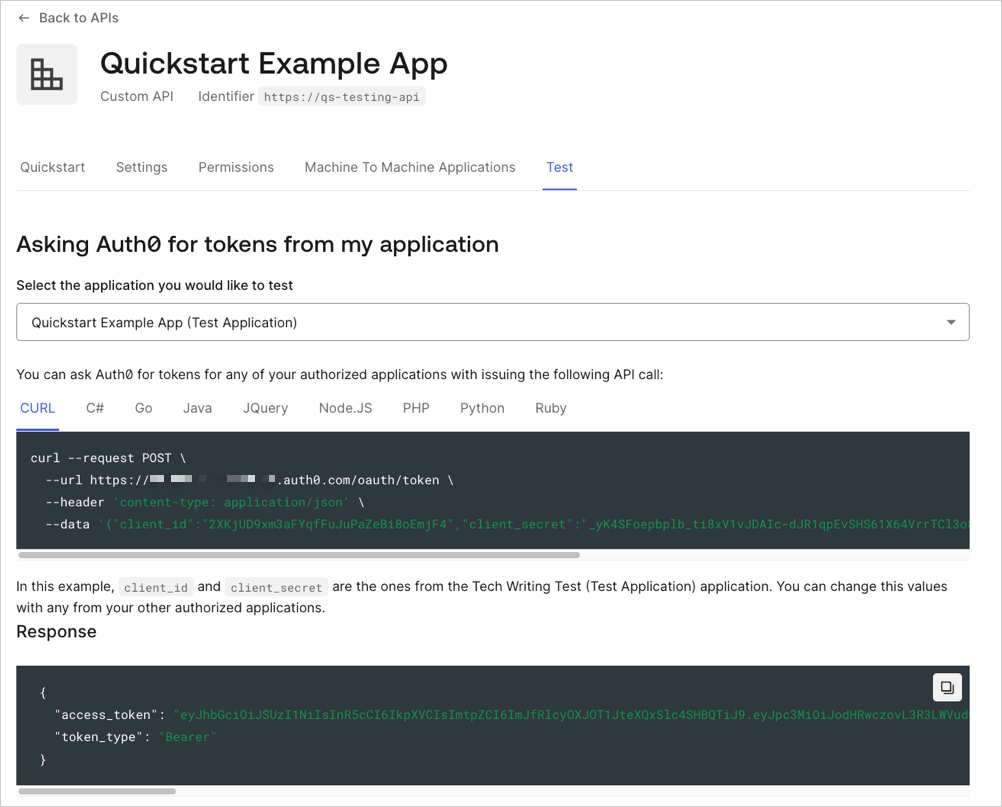This tutorial performs access token validation using the jwt Gem within a custom
Auth0Client class. A Concern called
Secured is used to authorize endpoints which require authentication through an incoming access token.If you have not created an API in your Auth0 dashboard yet, use the interactive selector to create a new Auth0 API
or select an existing API for your project.To set up your first API through the Auth0 dashboard, review our getting started
guide.Each Auth0 API uses the API Identifier, which your application needs to validate the access token.New to Auth0? Learn how Auth0 works
and read about implementing API authentication
and authorization using the OAuth 2.0 framework.
1
Define permissions
Permissions let you define how resources can be accessed on behalf of the user with a given access token. For
example, you might choose to grant read access to the 
messages resource if users have the manager
access level, and a write access to that resource if they have the administrator access level.You can define allowed permissions in the Permissions view of the Auth0 Dashboard’s APIs section.
This example uses the
read:messages scope.2
Install dependencies
Install the **jwt **Gem.
3
Create an Auth0Client class
Create a class called
Auth0Client. This class decodes and verifies the incoming access token taken
from the Authorization header of the request.The Auth0Client class retrieves the public key for your Auth0 tenant and then uses it to verify the
signature of the access token. The Token struct defines a validate_permissions method to
look for a particular scope in an access token by providing an array of required scopes and check if
they are present in the payload of the token.4
Define a Secured concern
Create a Concern called
Secured which looks for the access token in the Authorization
header of an incoming request.If the token is present, the Auth0Client.validate_token will use the jwt Gem to verify
the token’s signature and validate the token’s claims.In addition to verifying that the access token is valid, the Concern also includes a mechanism for confirming the
token has the sufficient scope to access the requested resources. In this example we define a
validate_permissions method that receives a block and checks the permissions by calling the
Token.validate_permissions method from the Auth0Client class.For the /private-scoped route, the scopes defined will be intersected with the scopes coming in the
payload, to determine if it contains one or more items from the other array.5
Include the Secure concern in your ApplicationController
By adding the
Secure concern to your application controller, you’ll only need to use a
before_action filter in the controller that requires authorization.6
Create the public endpoint
Create a controller to handle the public endpoint
/api/public.The /public endpoint does not require any authorization so no before_action is needed.7
Create the private endpoints
Create a controller to handle the private endpoints:  Provide the Access Token as an
Provide the Access Token as an
/api/private and
/api/private-scoped./api/private is available for authenticated requests containing an access token with no additional
scopes./api/private-scoped is available for authenticated requests containing an access token with the
read:messages scope grantedThe protected endpoints need to call the authorize method from the Secured concern, for
that you use before_action :authorize, this ensure the Secured.authorize method is
called before every action in the PrivateController.Make a Call to Your API
To make calls to your API, you need an Access Token. You can get an Access Token for testing purposes from the Test view in your API settings.
Authorization header in your requests.Checkpoint
Now that you have configured your application, run your application to verify that:GET /api/publicis available for non-authenticated requests.GET /api/privateis available for authenticated requests.GET /api/private-scopedis available for authenticated requests containing an Access Token with theread:messagesscope.
Next Steps
Excellent work! If you made it this far, you should now have login, logout, and user profile information running in your application.This concludes our quickstart tutorial, but there is so much more to explore. To learn more about what you can do with Auth0, check out:- Auth0 Dashboard - Learn how to configure and manage your Auth0 tenant and applications
- omniauth-auth0 SDK - Explore the SDK used in this tutorial more fully
- Auth0 Marketplace - Discover integrations you can enable to extend Auth0’s functionality

